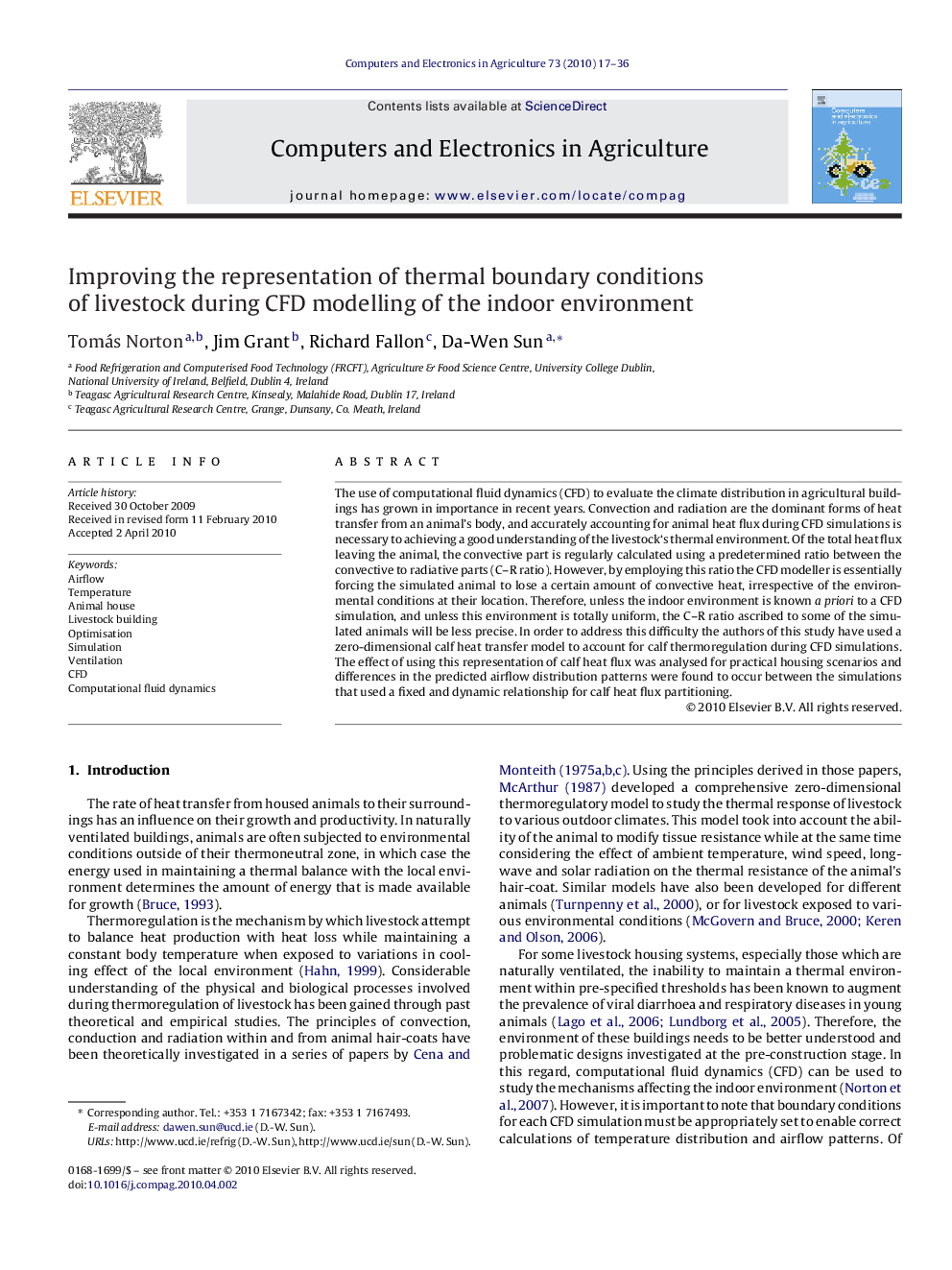| Article ID | Journal | Published Year | Pages | File Type |
|---|---|---|---|---|
| 84772 | Computers and Electronics in Agriculture | 2010 | 20 Pages |
The use of computational fluid dynamics (CFD) to evaluate the climate distribution in agricultural buildings has grown in importance in recent years. Convection and radiation are the dominant forms of heat transfer from an animal's body, and accurately accounting for animal heat flux during CFD simulations is necessary to achieving a good understanding of the livestock‘s thermal environment. Of the total heat flux leaving the animal, the convective part is regularly calculated using a predetermined ratio between the convective to radiative parts (C–R ratio). However, by employing this ratio the CFD modeller is essentially forcing the simulated animal to lose a certain amount of convective heat, irrespective of the environmental conditions at their location. Therefore, unless the indoor environment is known a priori to a CFD simulation, and unless this environment is totally uniform, the C–R ratio ascribed to some of the simulated animals will be less precise. In order to address this difficulty the authors of this study have used a zero-dimensional calf heat transfer model to account for calf thermoregulation during CFD simulations. The effect of using this representation of calf heat flux was analysed for practical housing scenarios and differences in the predicted airflow distribution patterns were found to occur between the simulations that used a fixed and dynamic relationship for calf heat flux partitioning.
